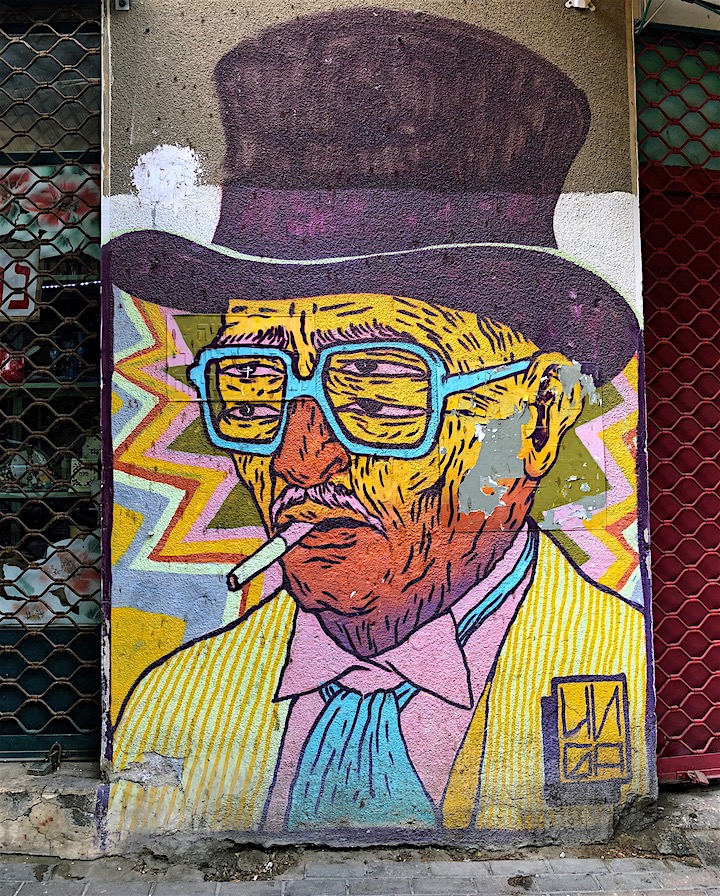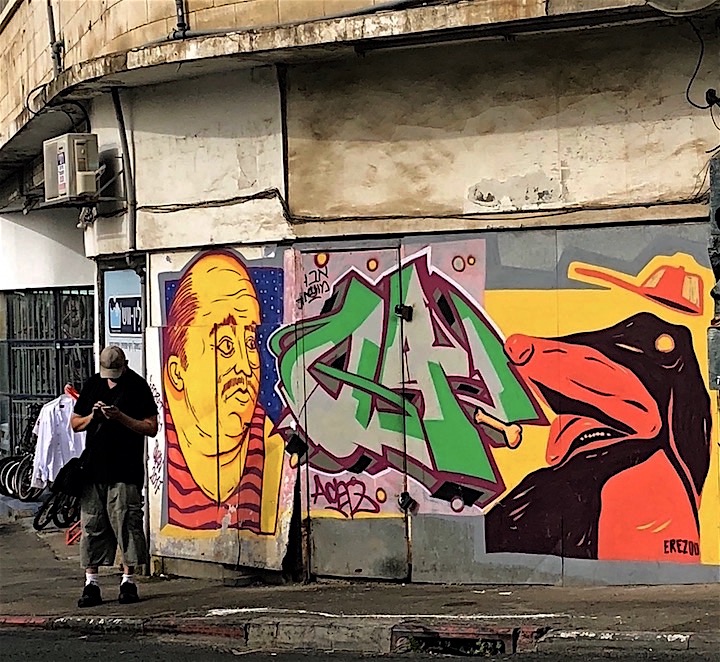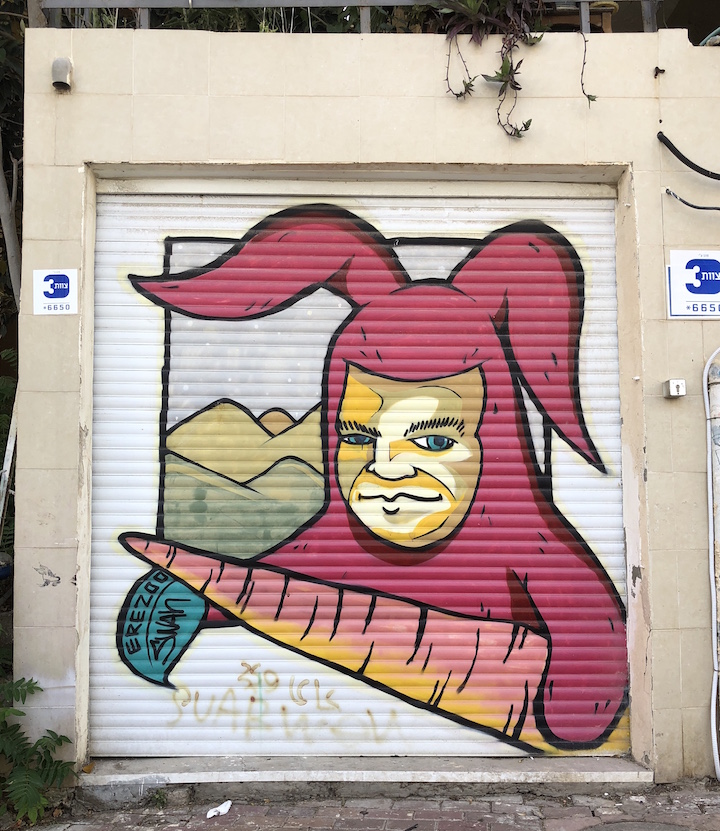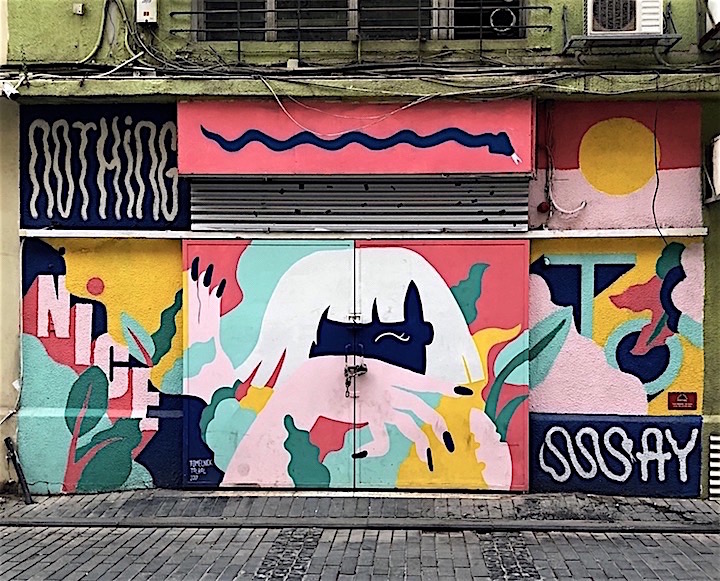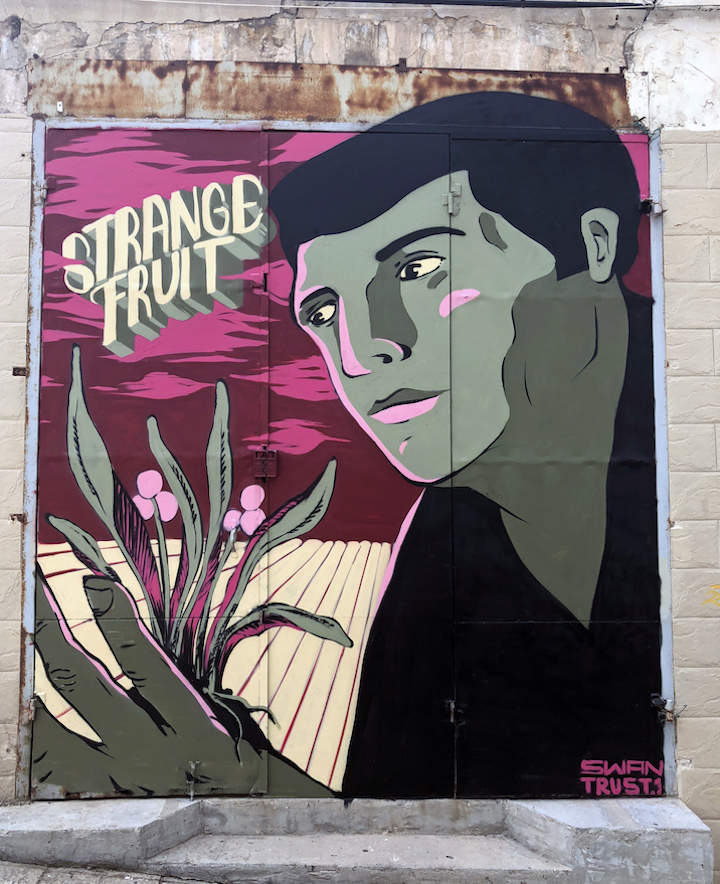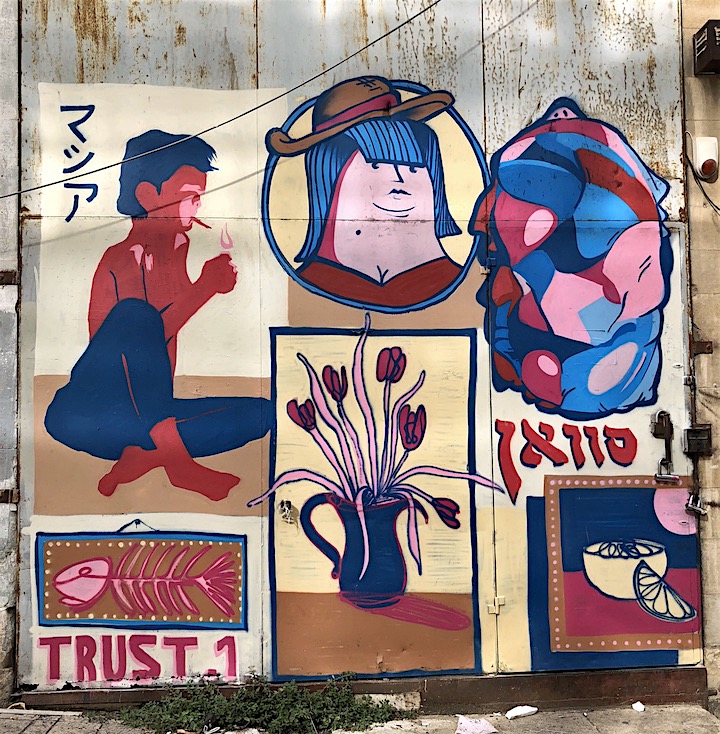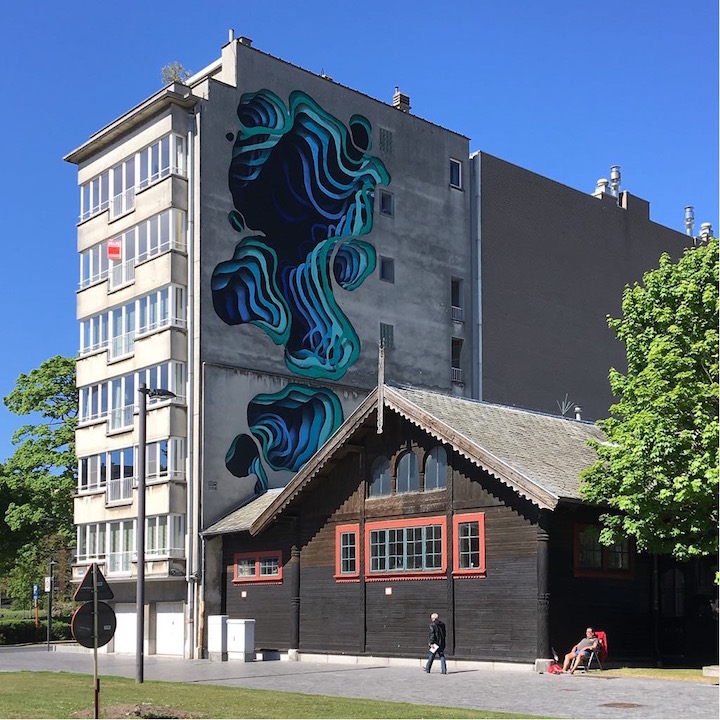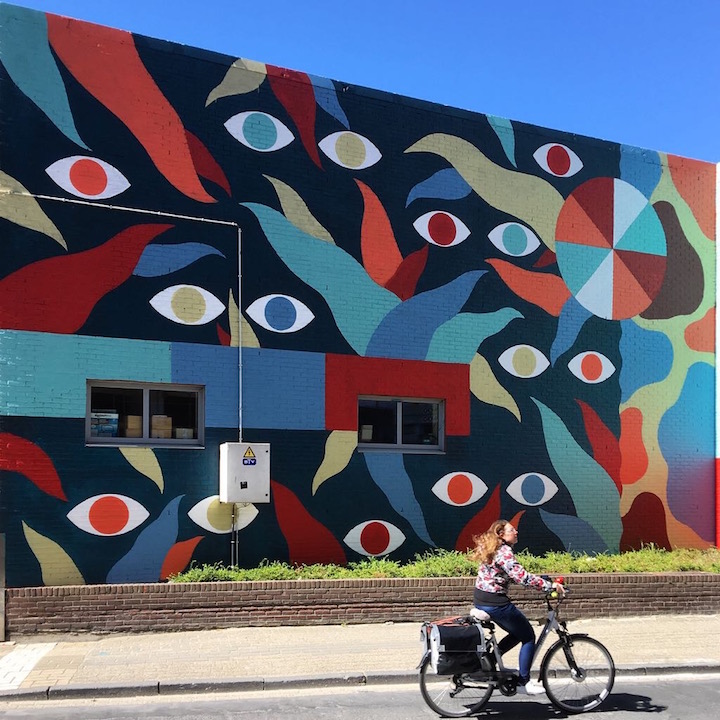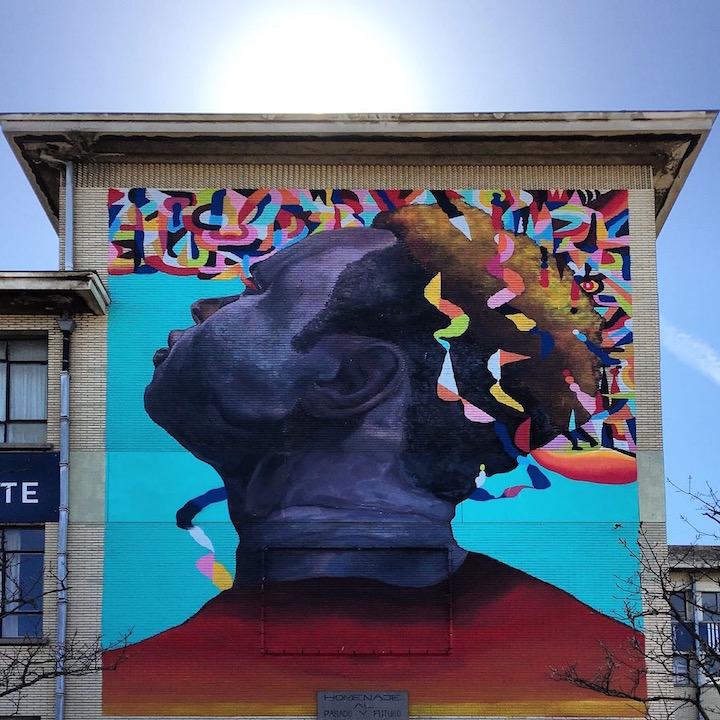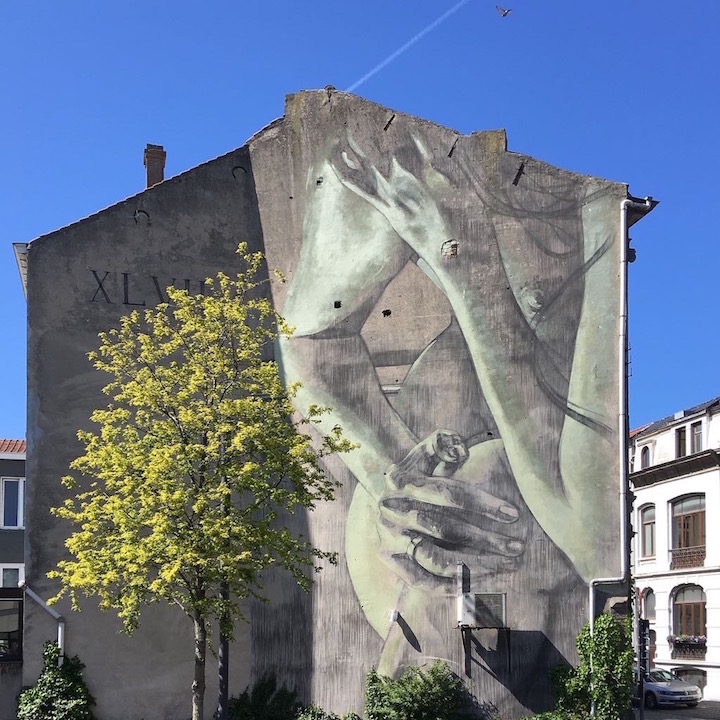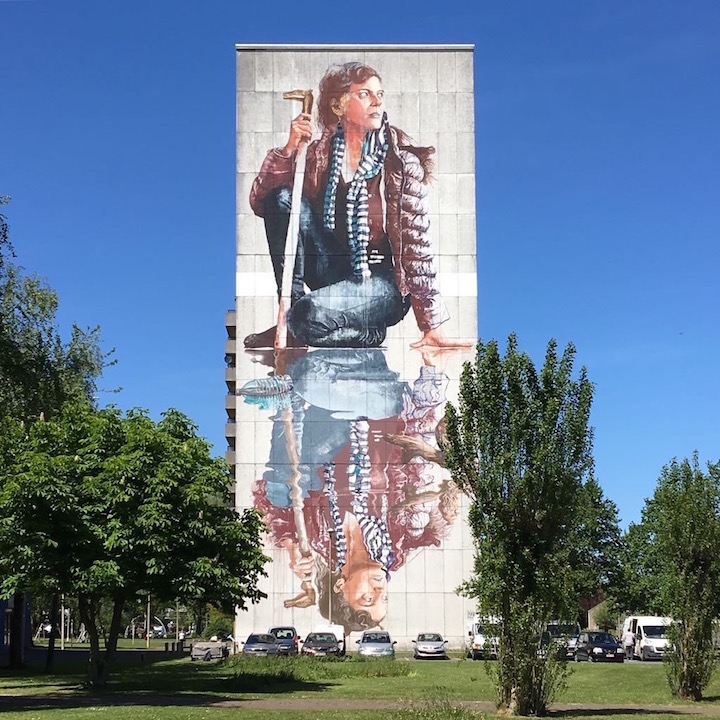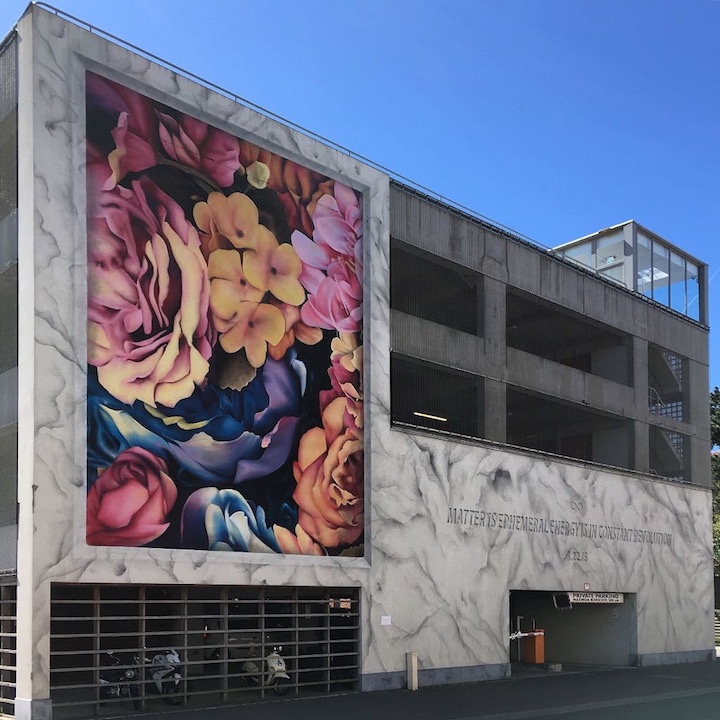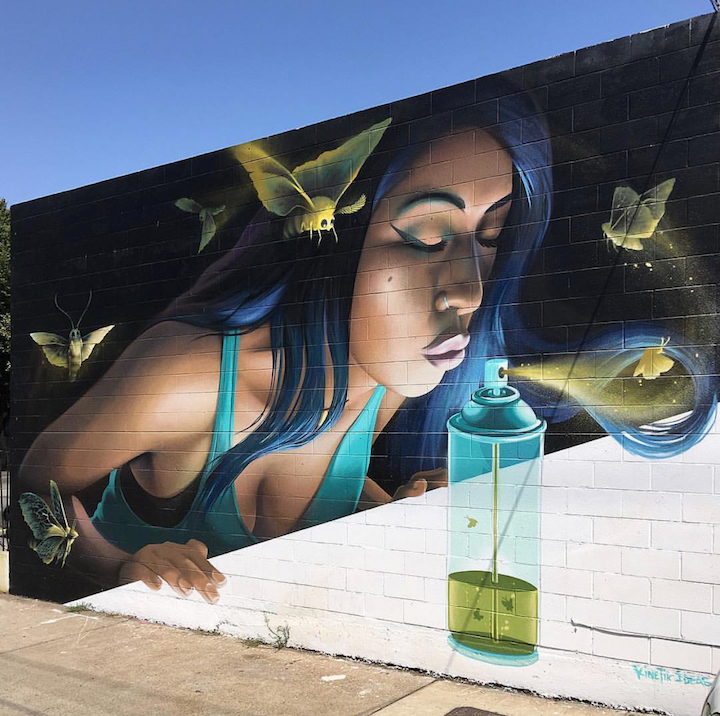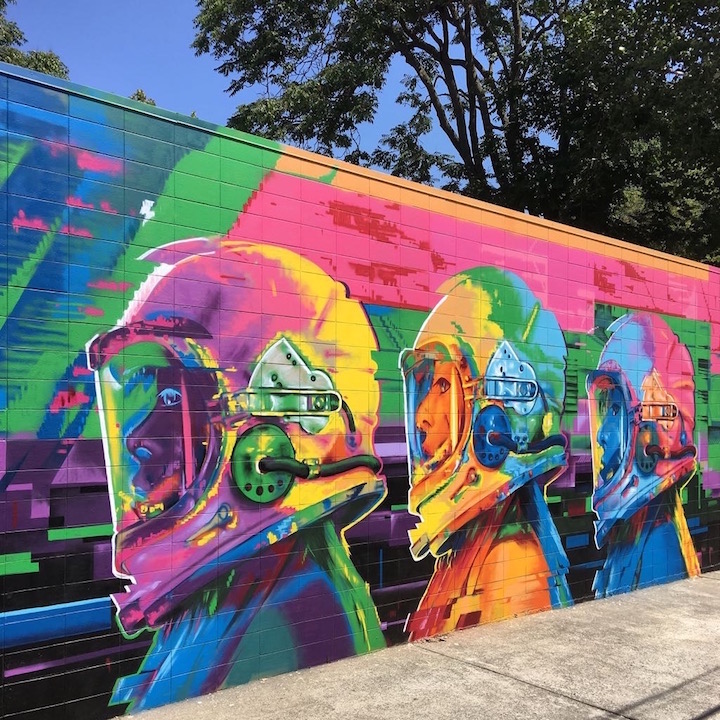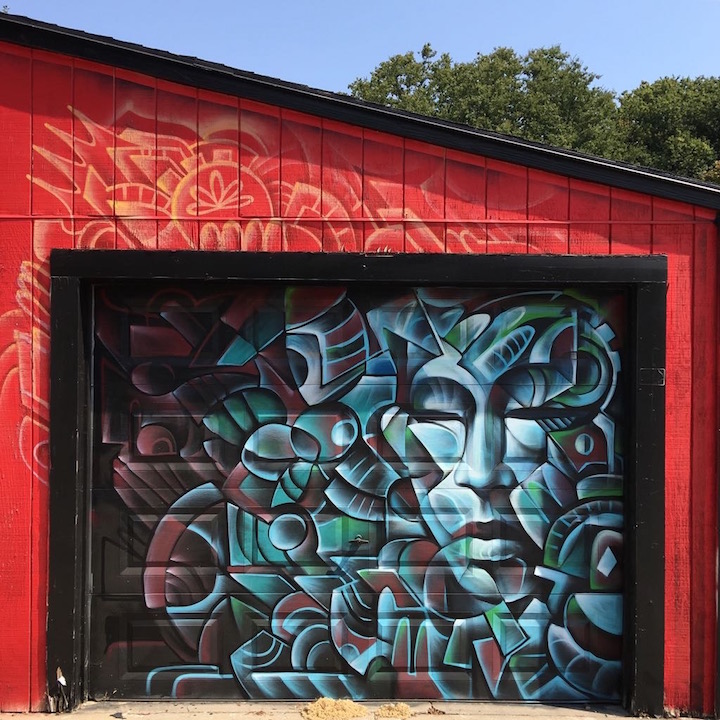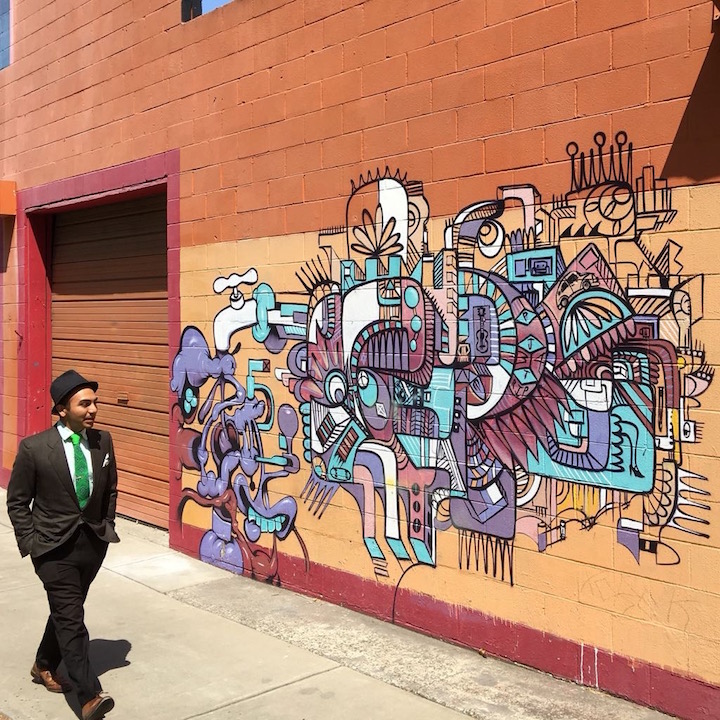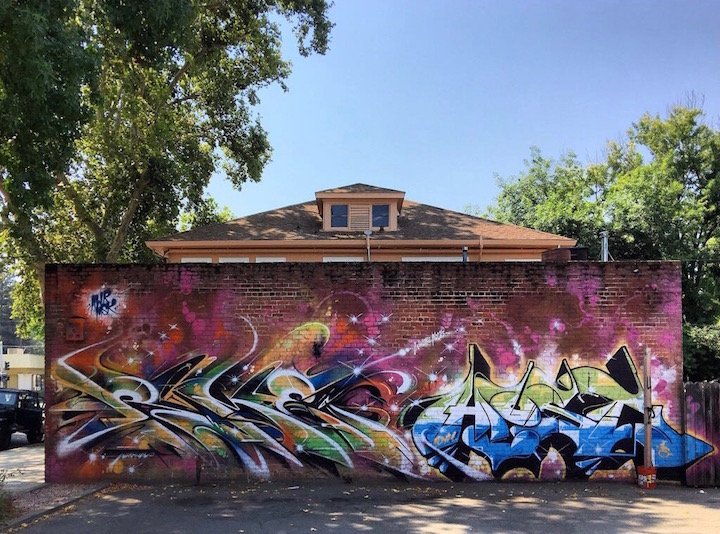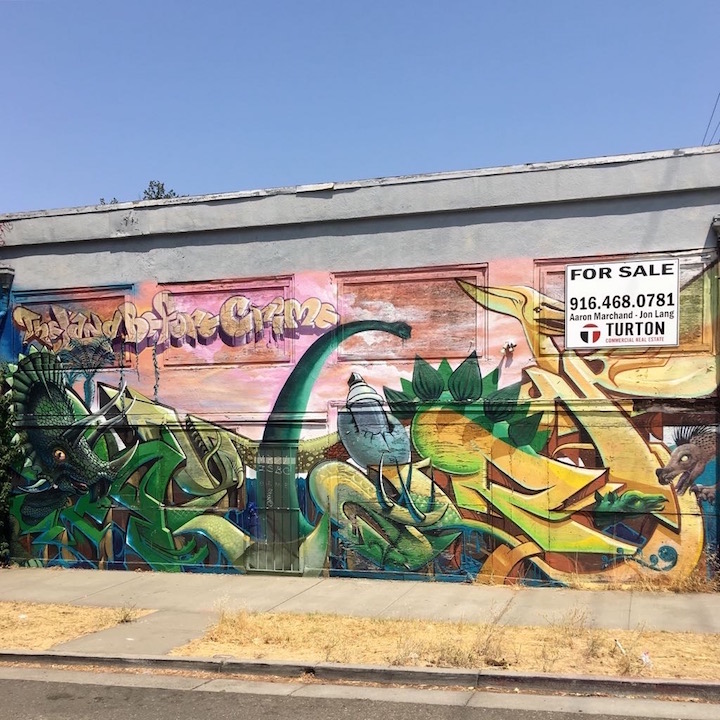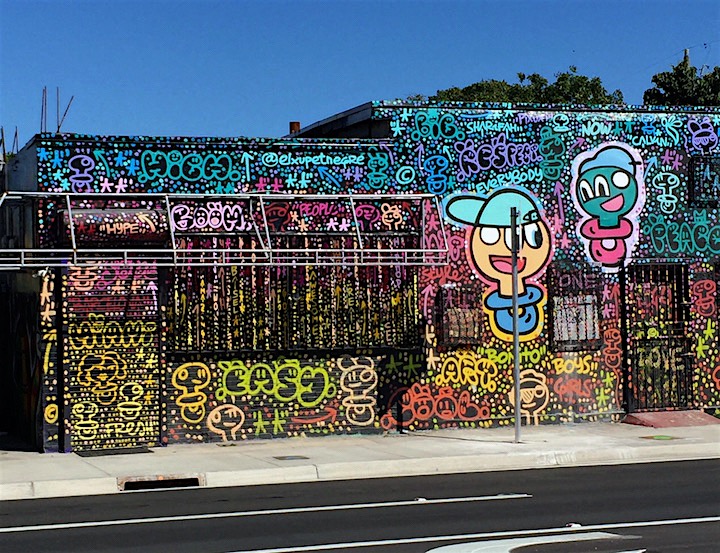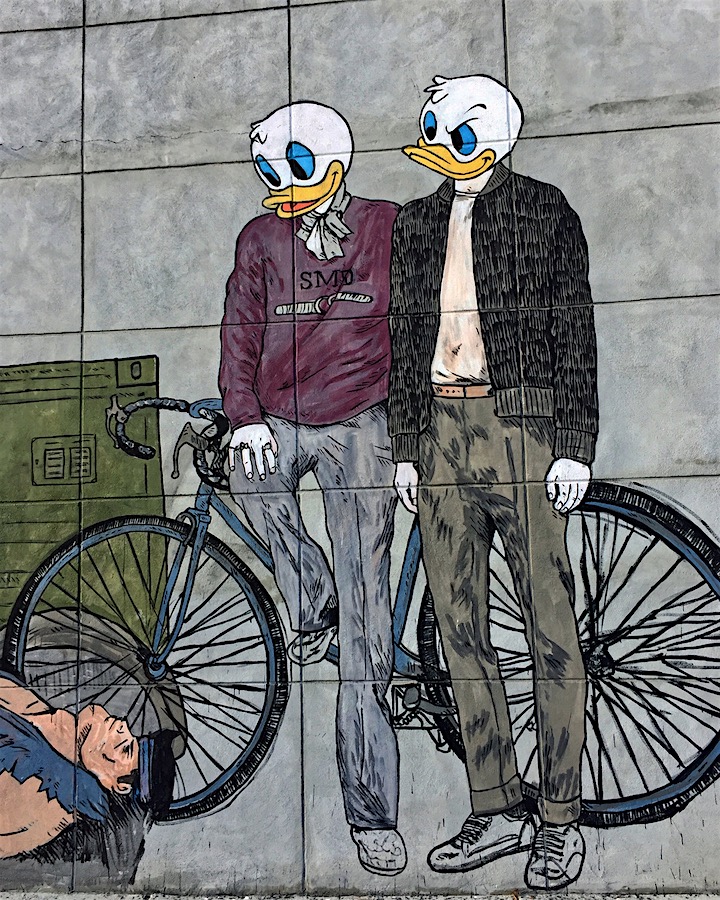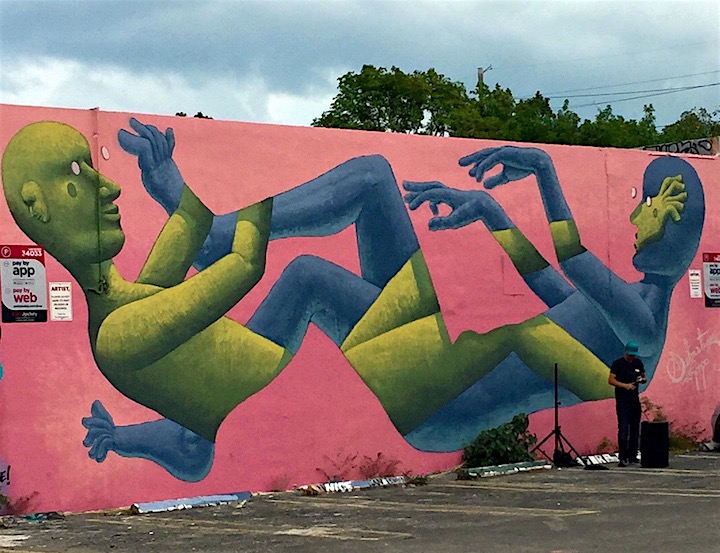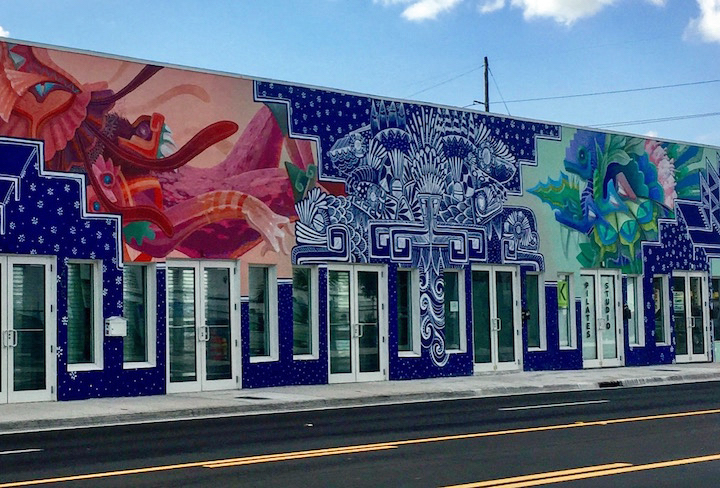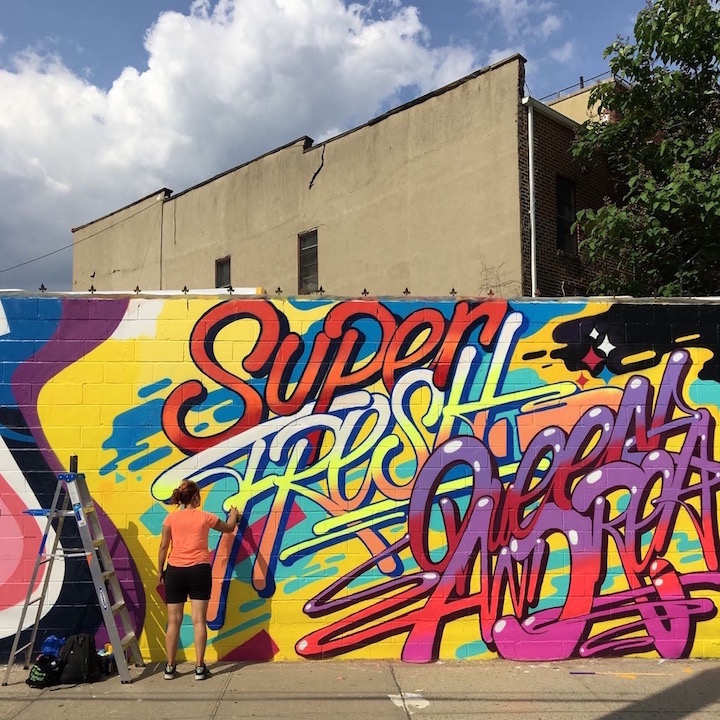
Today, Saturday, June 9th, marks the ninth anniversary of the extraordinary community-driven Welling Court Mural Project, conceived and curated by Ad Hoc Art. While visiting yesterday, travel and street photographer Karin du Maire aka Street Art Nomad captured several artists at work, as well as a few completed murals. Pictured above is the wonderfully talented Queen Andrea at work. Several more images follow:
John “Crash” Matos — posing in front of his mural, based on a painting of his from 1980
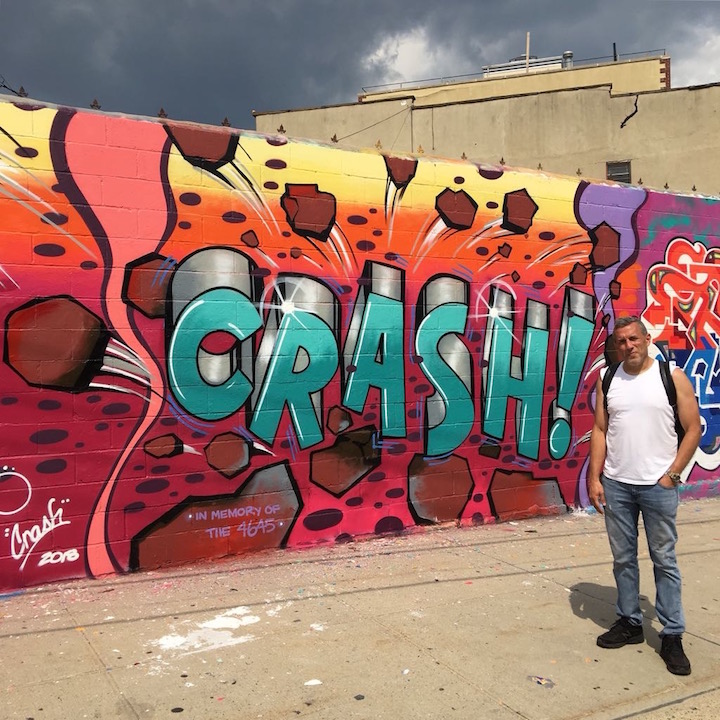
Lmnopi
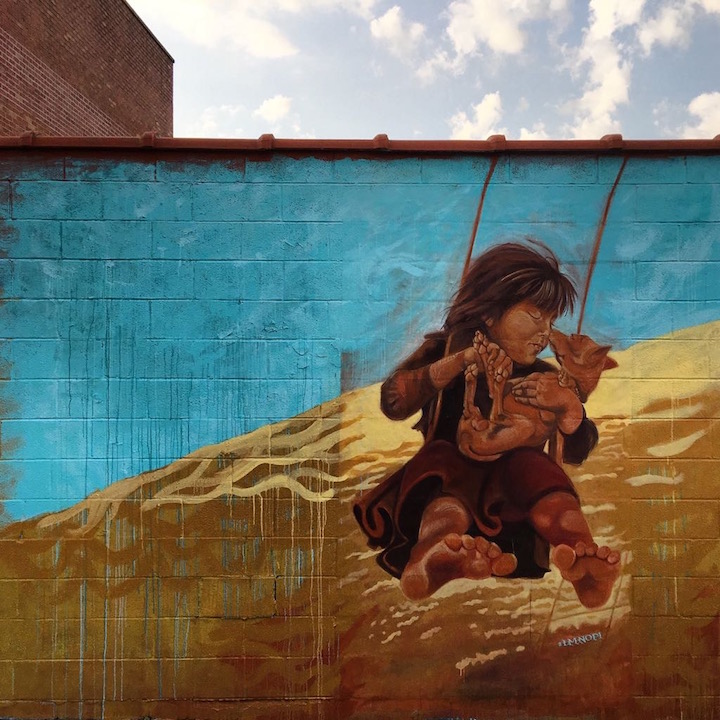
Joel Artista and Marc Evan at work on collaborative wall with Chris Soria
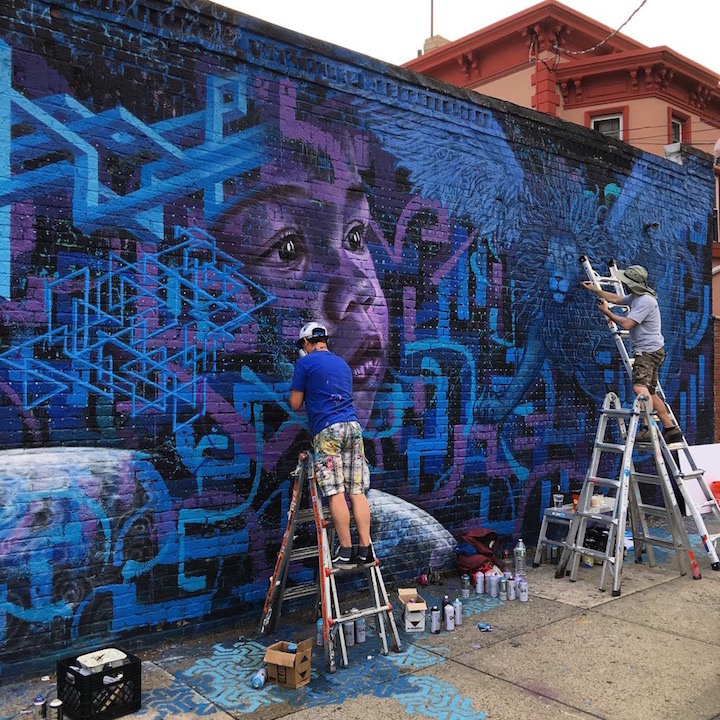
Netherlands-based Michel Velt at work
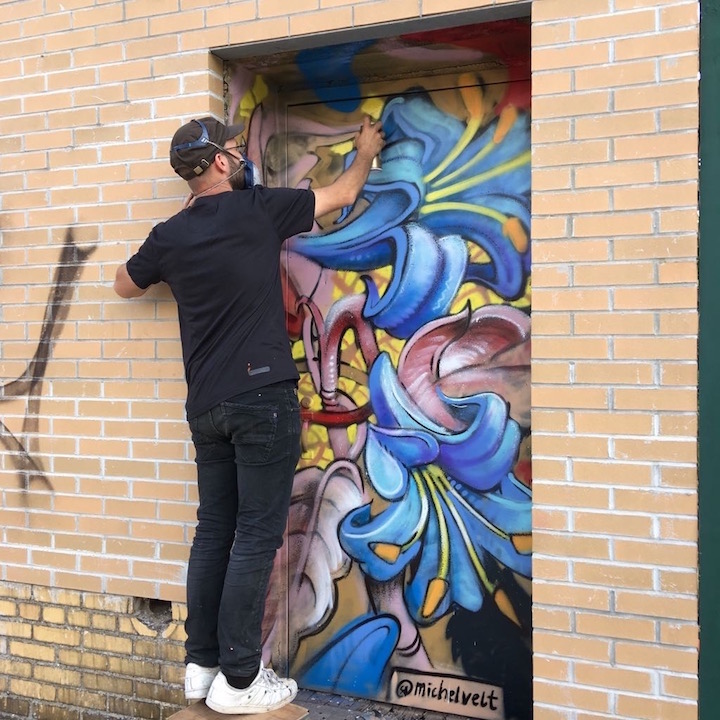
Cey Adams
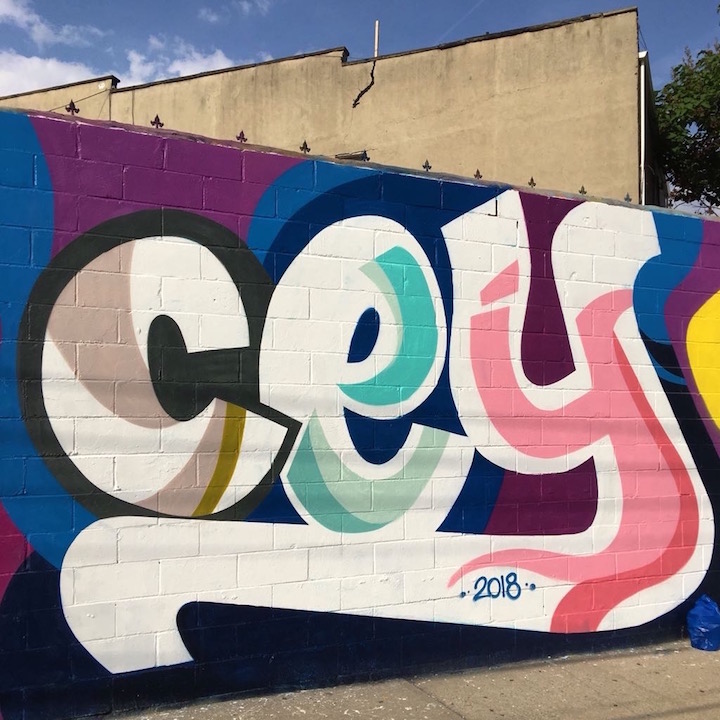
KingBee at work
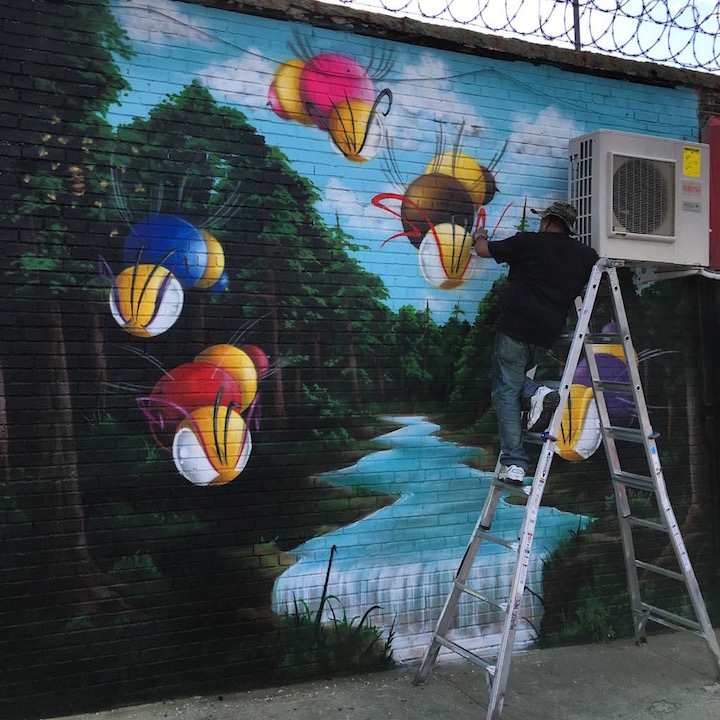
Peat Wollaeger aka Eyez
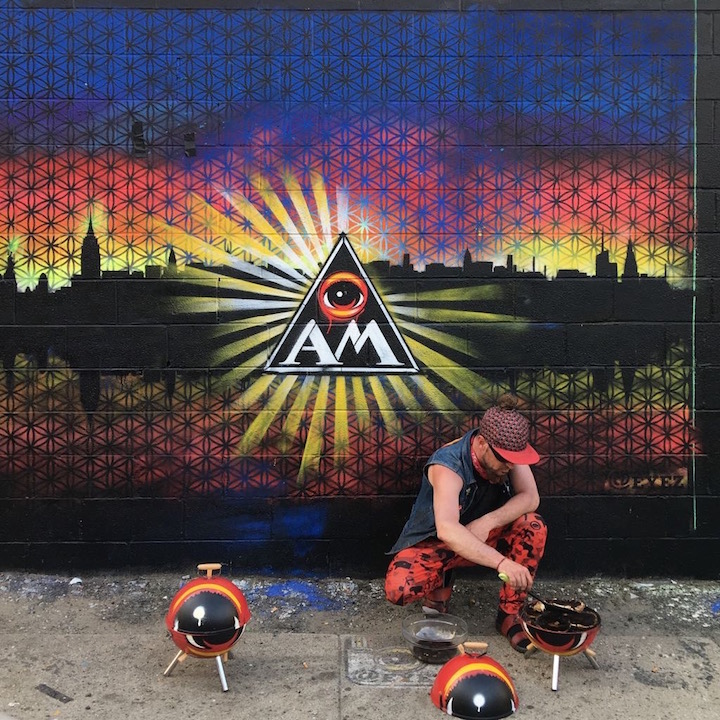
Herb Smith aka Veng, RWK, alongside his mural
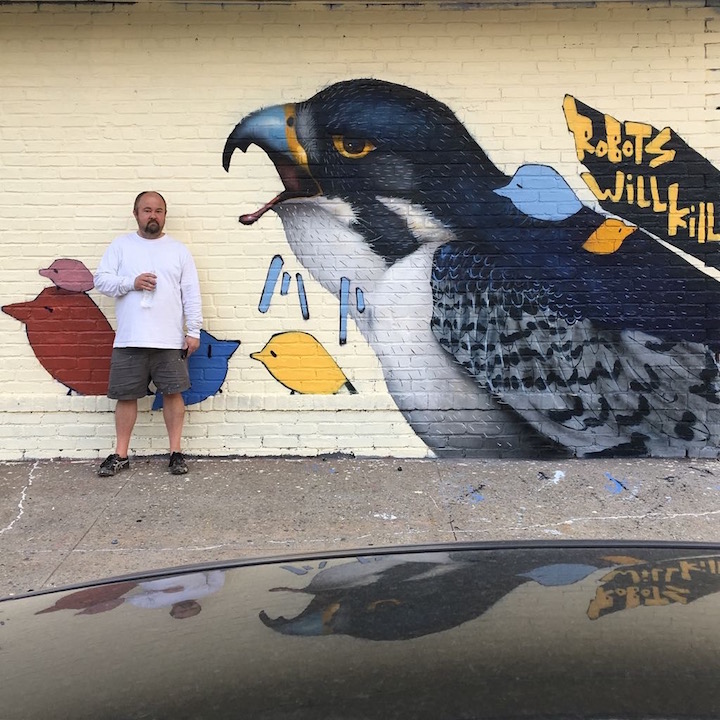
Celebrate the launch of this model community-based mural project from 12pm – 8pm today at 11-98 Welling Court in Astoria, Queens. Check here for directions.
Photos by Karin du Maire
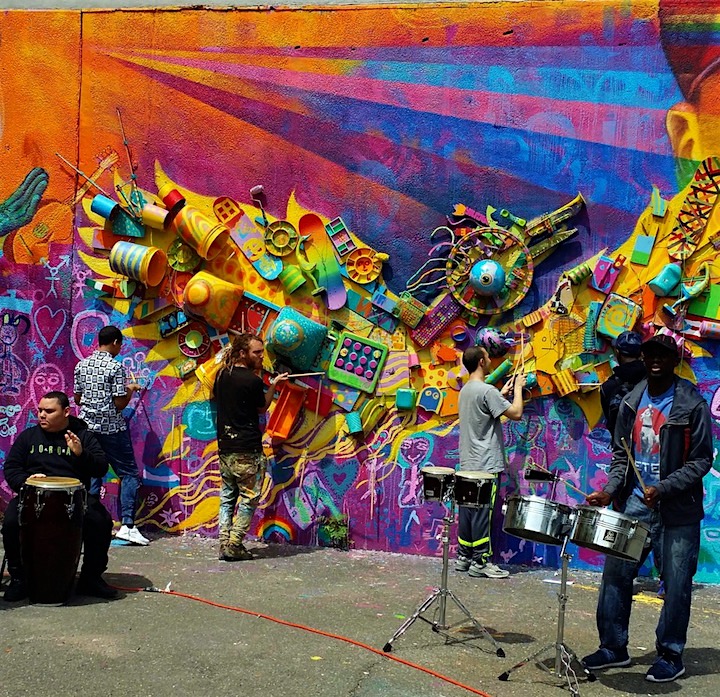
Launched by artists and arts educators Max Frieder and Joel Bergner aka Joel Artista, Artolution is a community-based public art initiative with the goal of promoting healing and positive social change through collaborative art making. For two weeks last month, Artolution directors, Max Frieder and Joe Artista — along with members of the local community — worked with LGBTQ+ students from NYC’s Harvey Milk High School and with students facing such challenges as autism and down symdrome from the Manhattan School of Career Development. The results are remarkable!
Planning session in progress
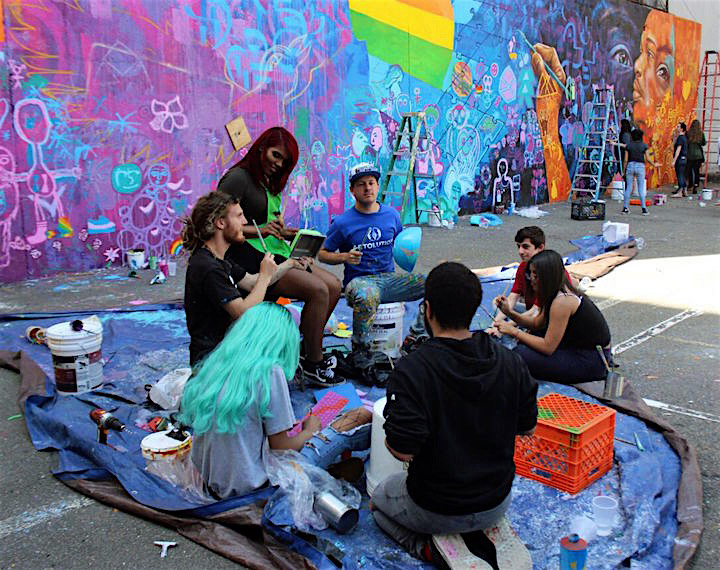
Young artists at work
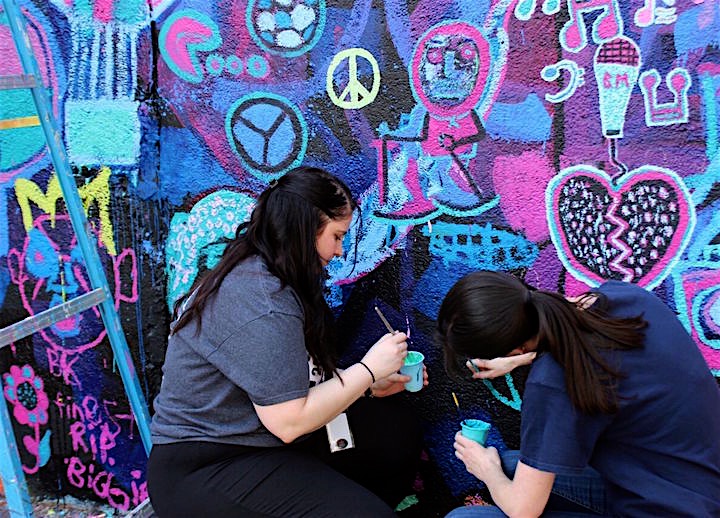
Discarded objects become not only an art installation, but musicial instruments, as well
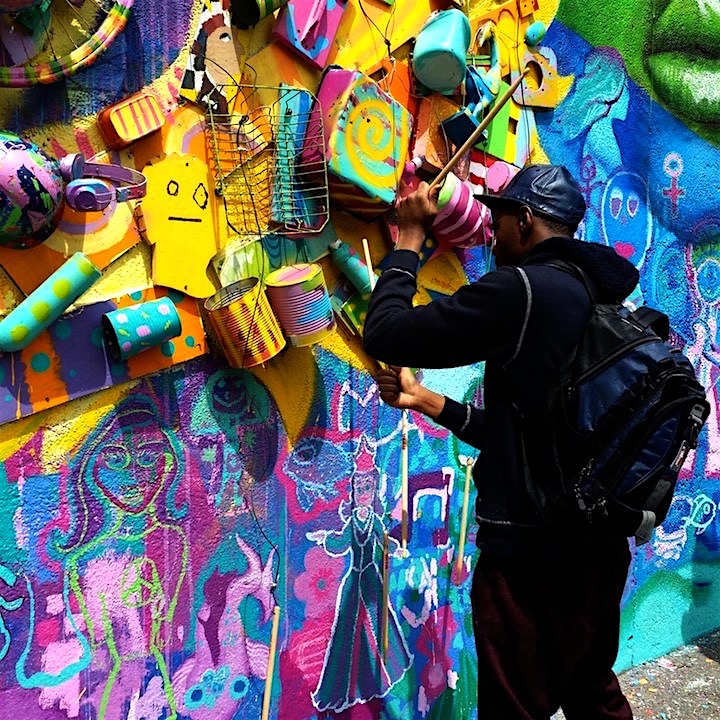
Segment of final mural
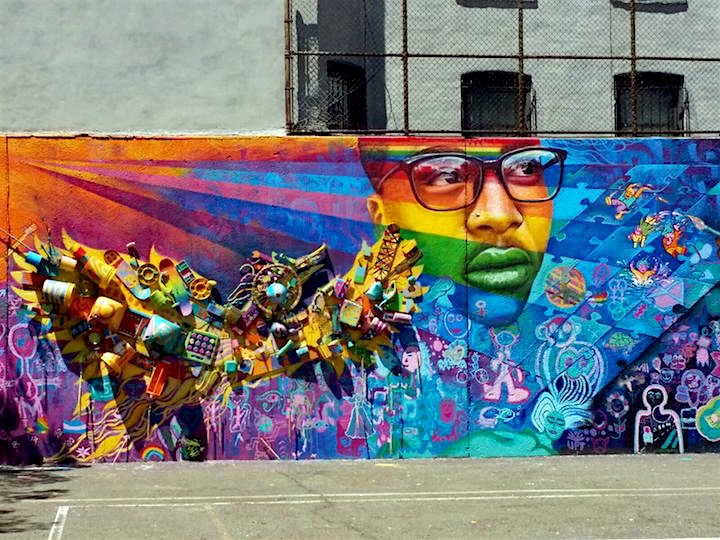
Completed mural
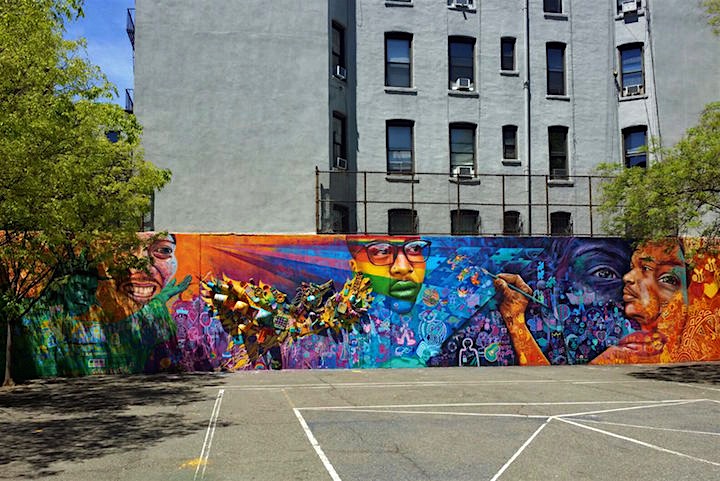
A cause for celebration
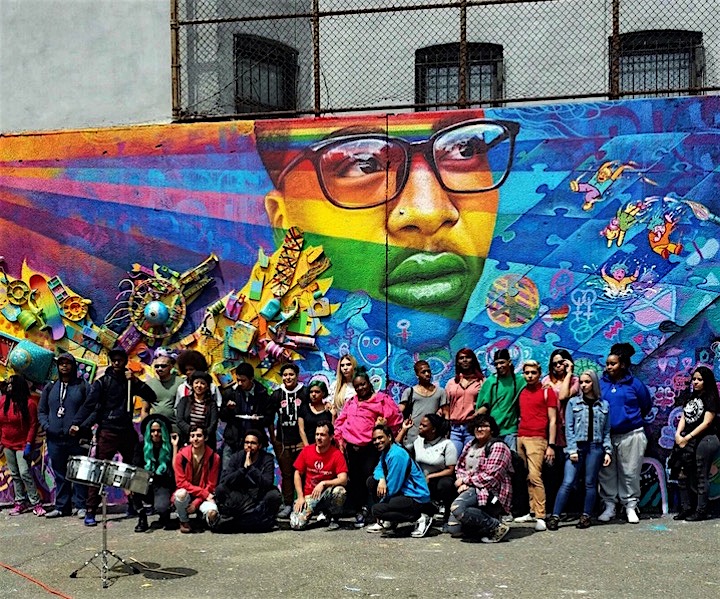
The mural can be seen on 5th Street between 1st and 2nd Avenues in the East Village.
Photos by Tara Murray
Note: Hailed in a range of media from WideWalls to the Huffington Post to the New York Times, our Street Art NYC App is now available for Android devices here.

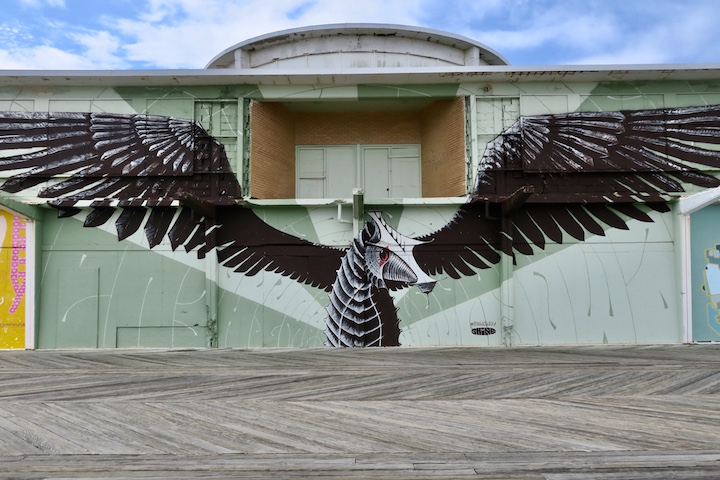
Since 2015, Wooden Walls has been bringing a diverse range of first-rate local, national and international artists to the boardwalk of Asbury Park, a small — but vibrant — seaside city on the Jersey shore. The image pictured above was designed and painted by West Coast-based artist Mike Shine. What follows are several more Wooden Walls murals recently captured by arts educator and photographer Rachel Fawn Alban:
The mysteriously beguiling NYC-based Dee Dee
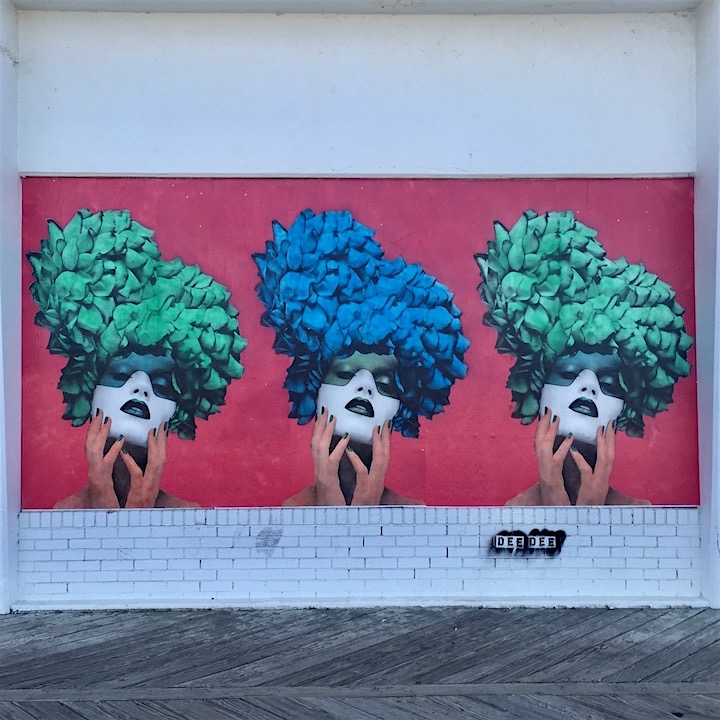
Asbury Park-based multidisciplinary artist Porkchop
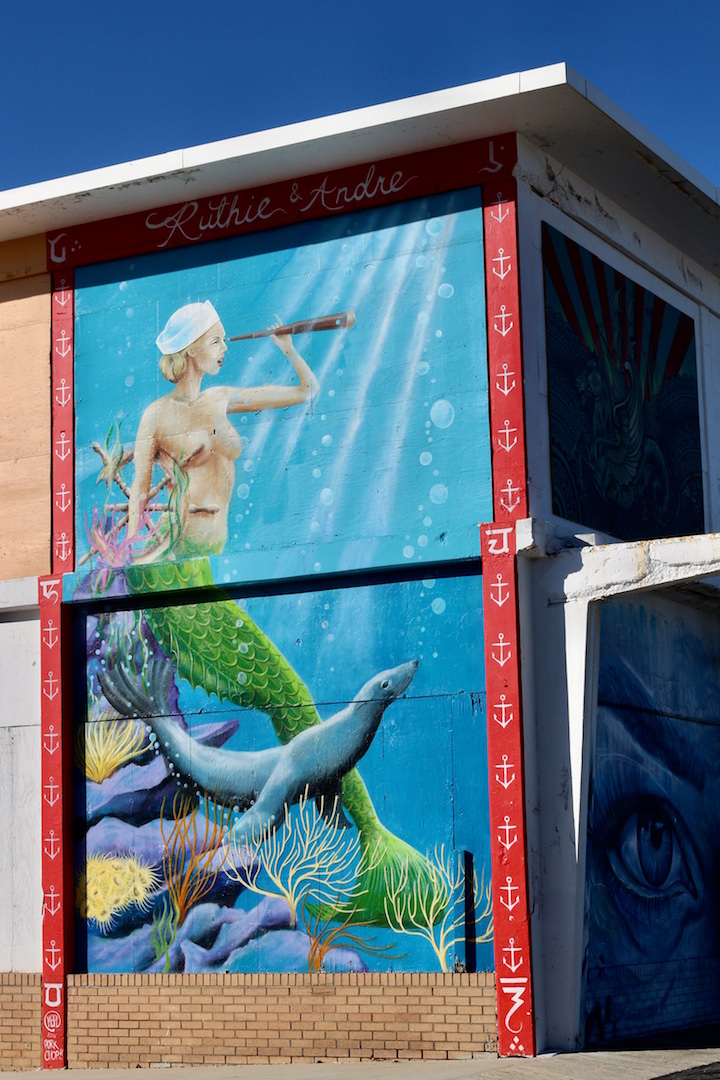
Brazilian artist Thiago Valdi
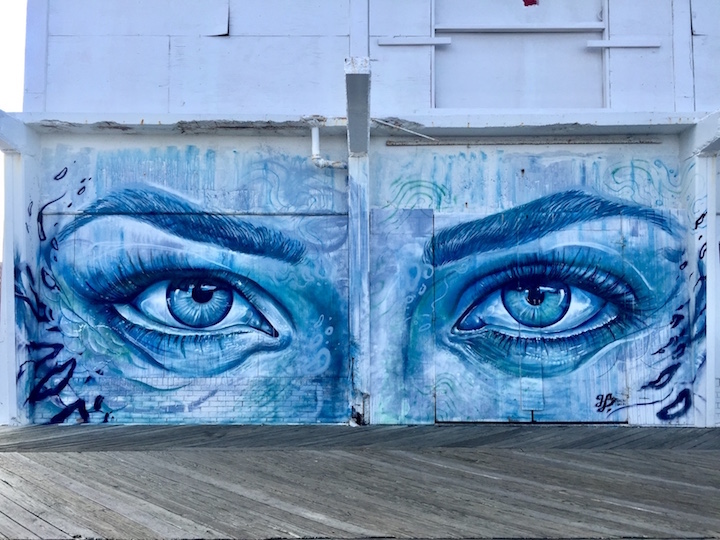
With West Coast native Beau Stanton painted above
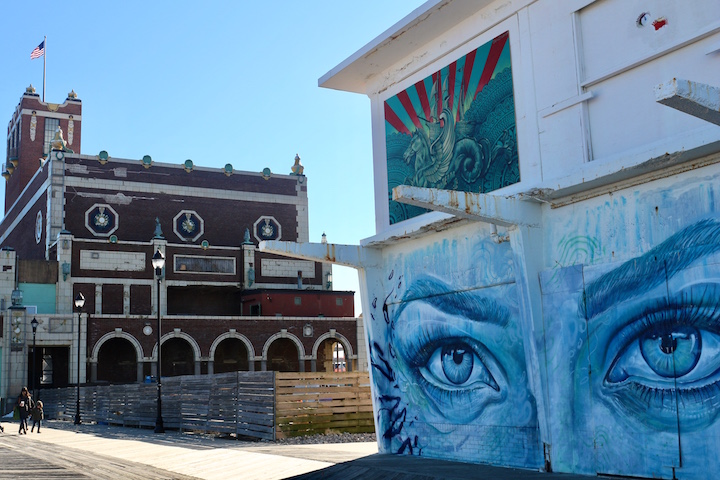
Beau Stanton, up close
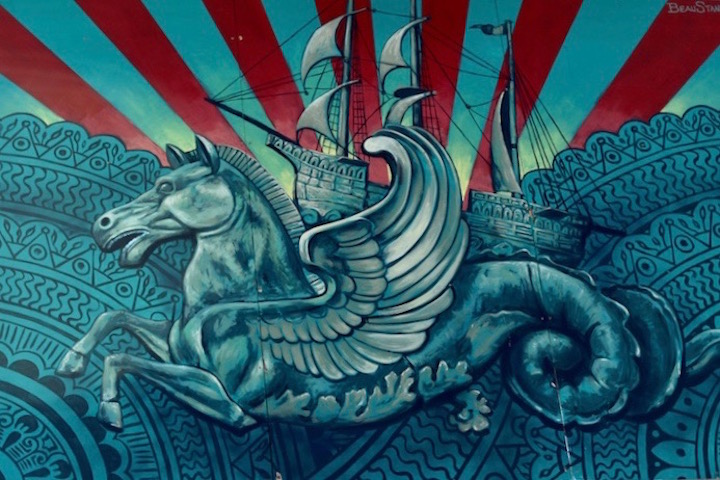
Photos by Rachel Fawn Alban
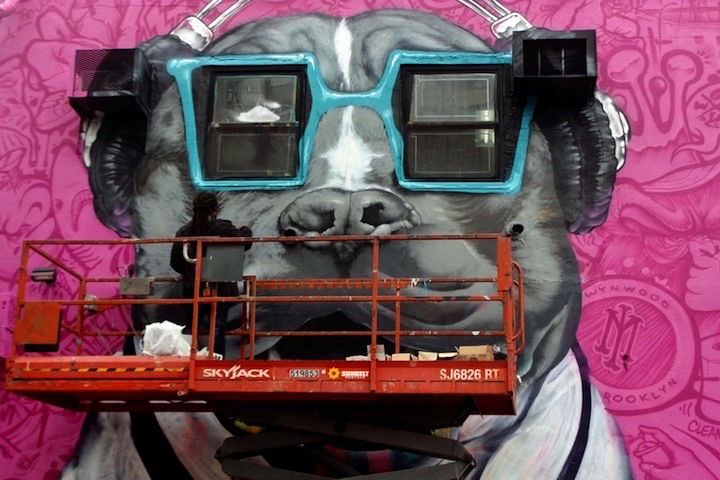
It’s been a busy week at the Bushwick Collective, as arists from near and far ready for its 7th Annual Block Party. Pictured above is Miami-based Dominican artist Ruben Ubiera captured at work. Several more images of new works — mostly in progress — follow:
Long Island-based Reme821
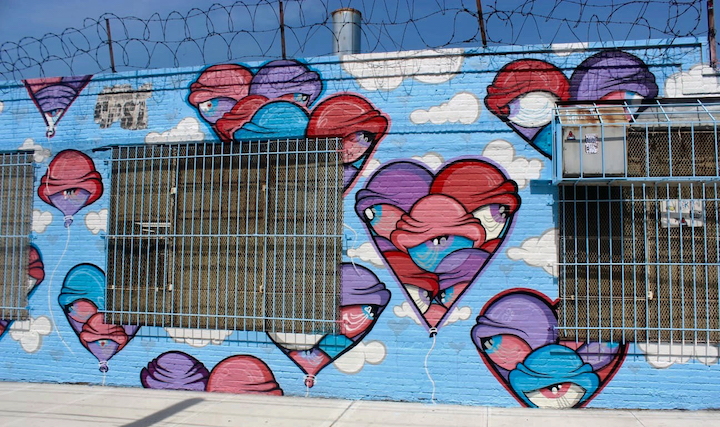
The masterful Argentine stencil artist Cabaio at work, close-up
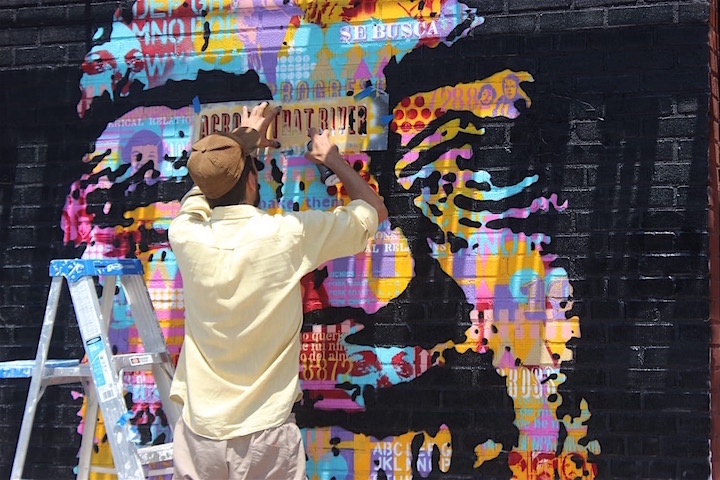
Holland-based Mr. June at work, close-up
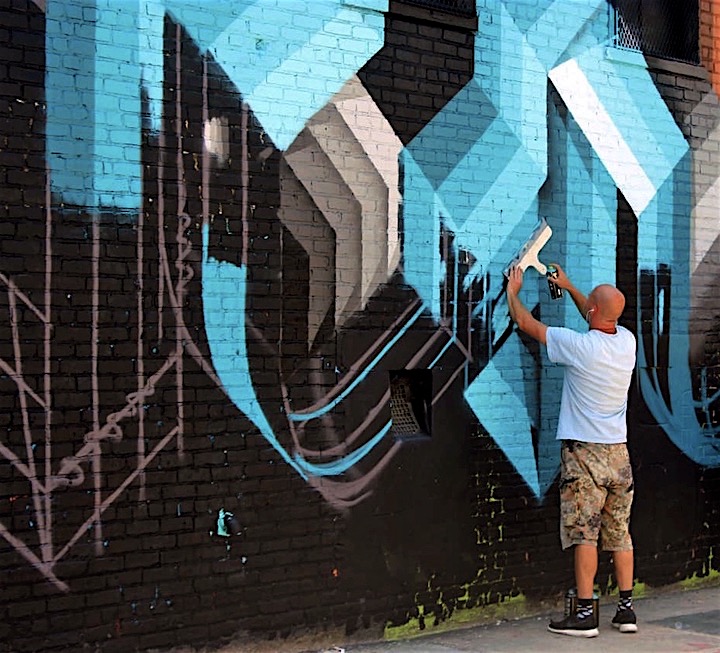
Brazilian artist Sipros at work
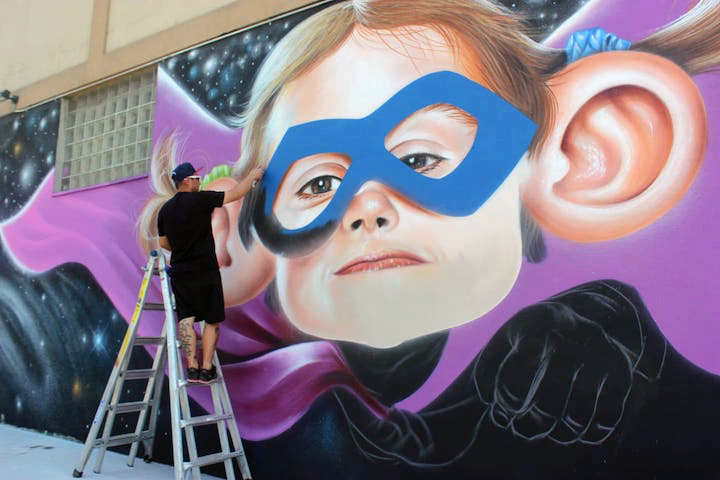
For specific information about the Bushwick Collective’s 7th Annual Block Party, check out its Facebook page.
Photos by Tara Murray
Note: Hailed in a range of media from WideWalls to the Huffington Post to the New York Times, our Street Art NYC App is now available for Android devices here.

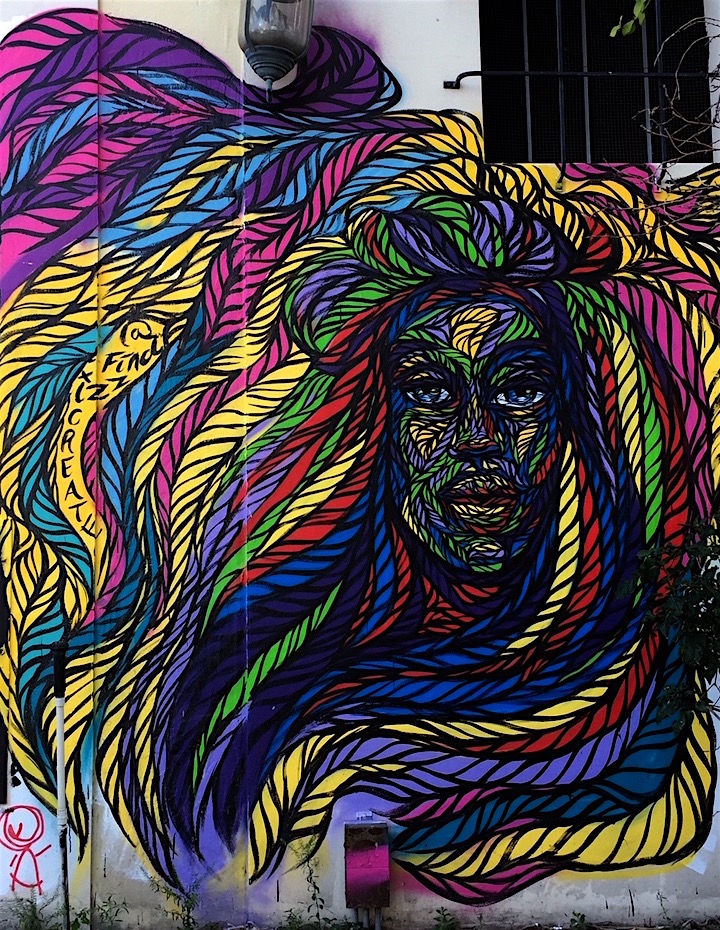
The faces that surface on Miami’s walls — like so much of the art that makes its way onto the city’s public places — represent a wide range of artistic styles, sensibilities and backgrounds. The image featured above was painted by Brooklyn-based artist Isabelle Ewing. Several more images of faces that I captured on my recent visit follow:
Jacksonville, Florida-based Nico
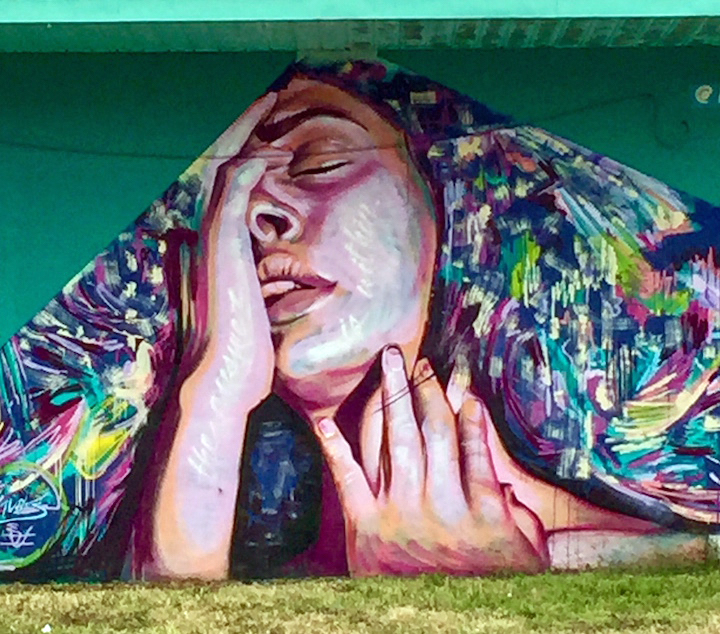
London-based David Walker
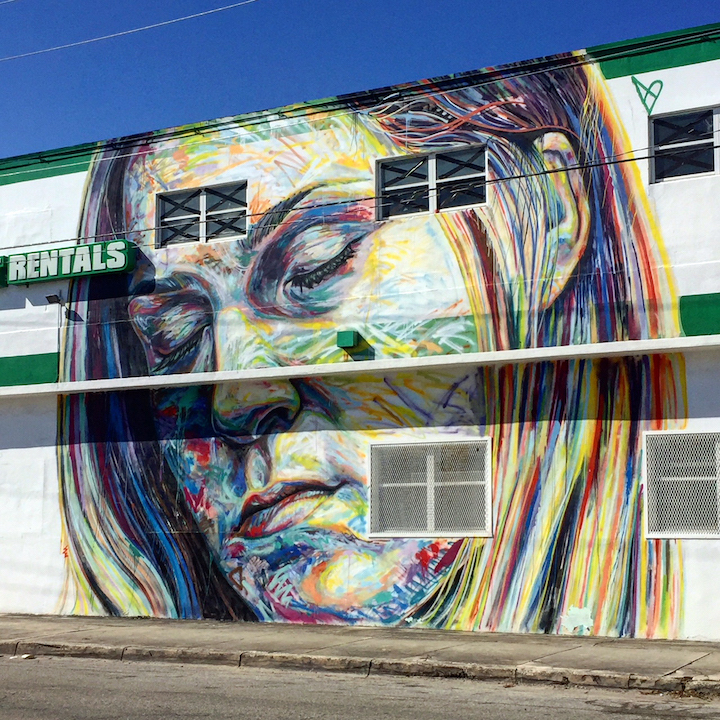
Australian artist Seb Humphreys aka Order 55
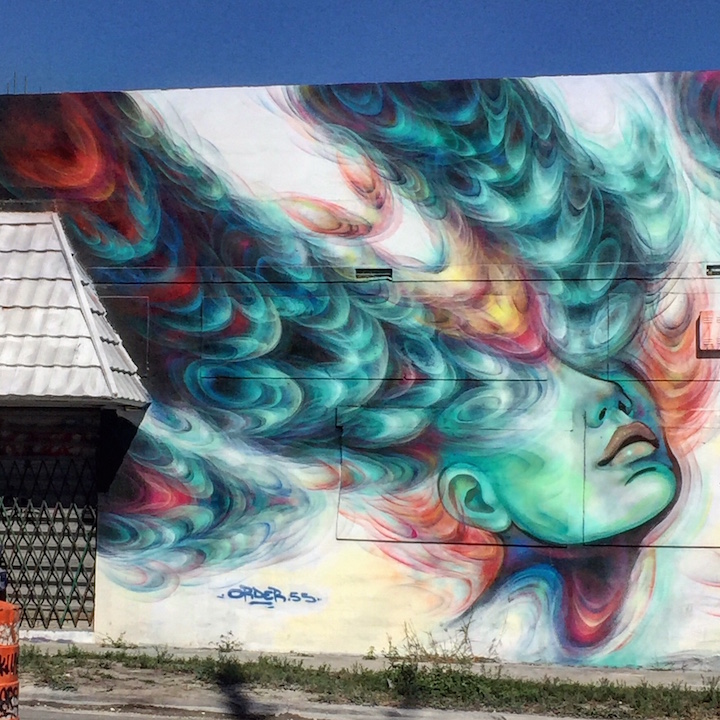
Miami-based Abstrk
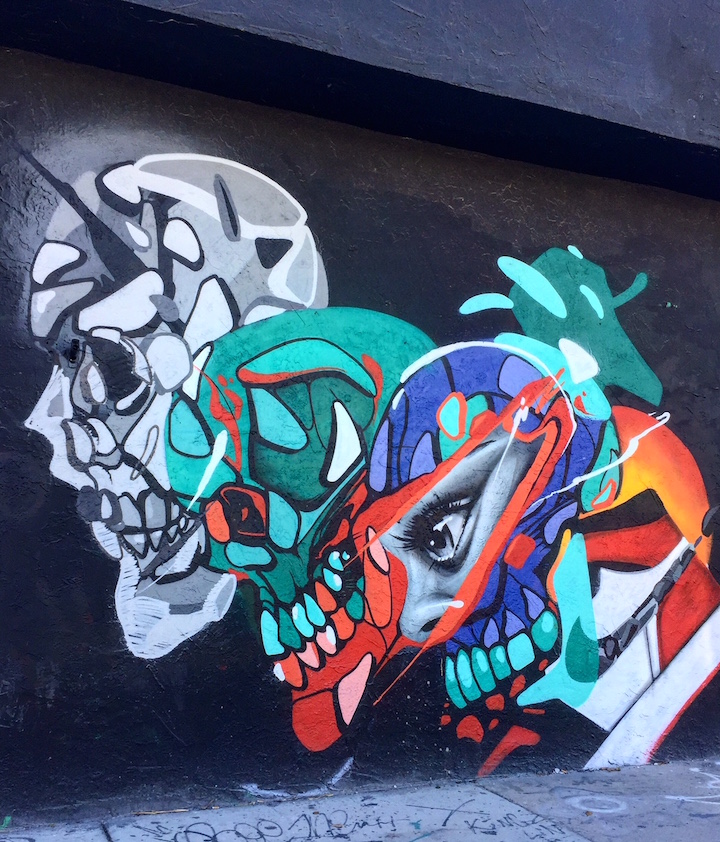
West Coast-based Sauteezy aka A Killer’skiller
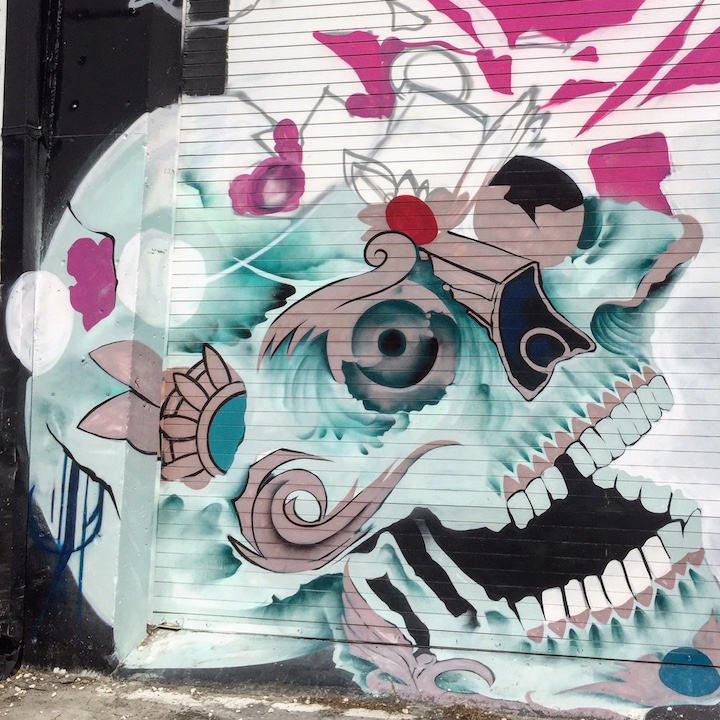
Photos by Lois Stavsky
Note: Hailed in a range of media from WideWalls to the Huffington Post to the New York Times, our Street Art NYC App is now available for Android devices here.

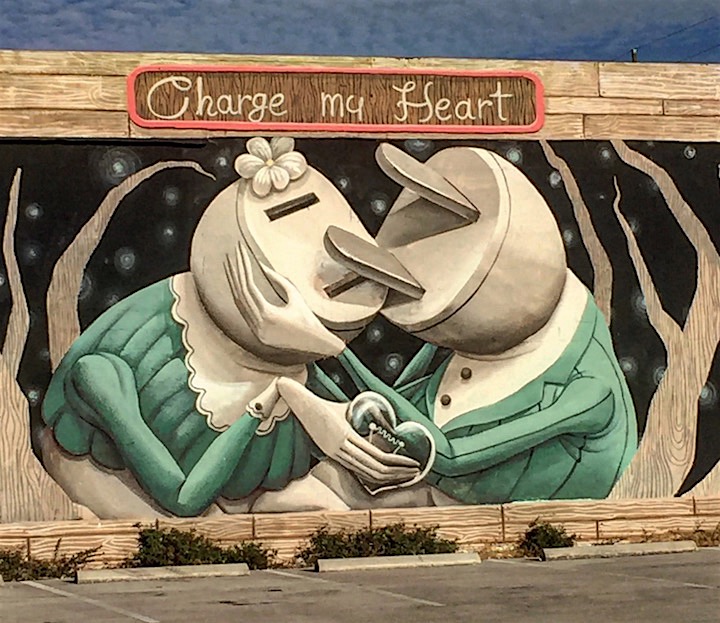
What makes Miami so special for us street art aficionados is the incredible mix of cultures and styles that makes its way to the streets of Wynwood and its surroundings. The wonderfully diverse range of characters that continues to surface are testament to this. Featured above is a close-up from a huge mural fashioned by the Italian artist Zed1. Several more follow in this first of a two-part series featuring curious characters recently encountered on Miami streets.
Chilean artists Jekse & Cines aka Un Kolor Distinto
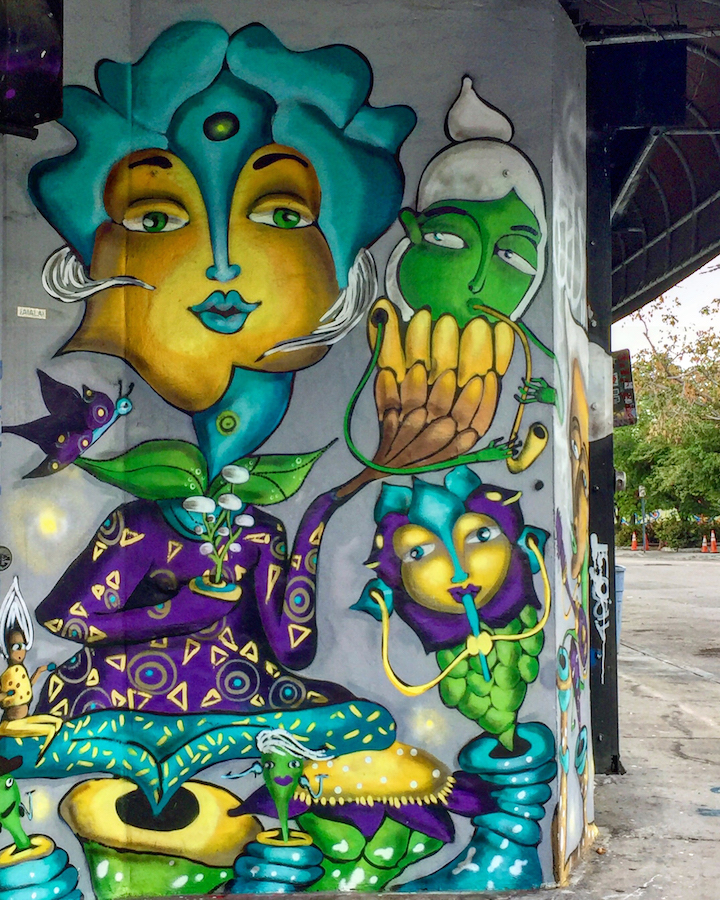
Brazilian artist Cranio
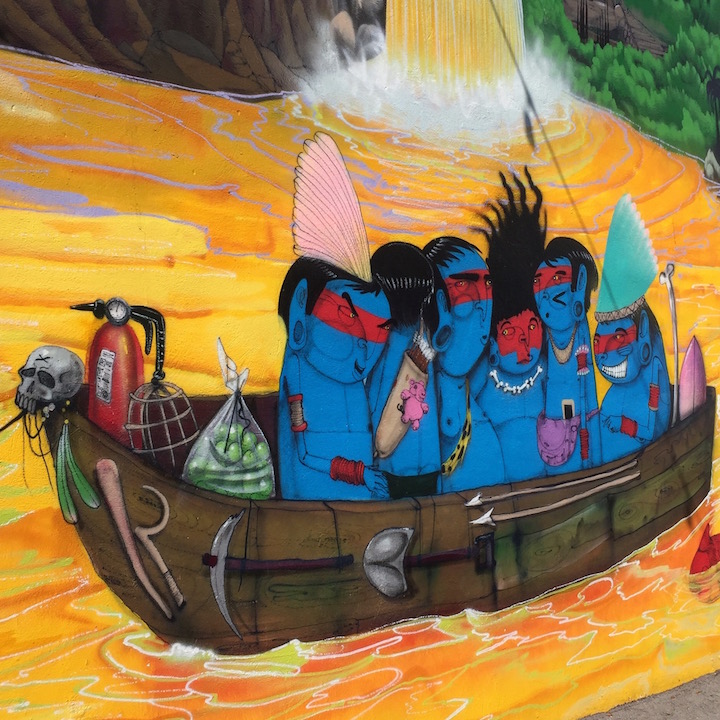
Ecuadorian artist Apitatán
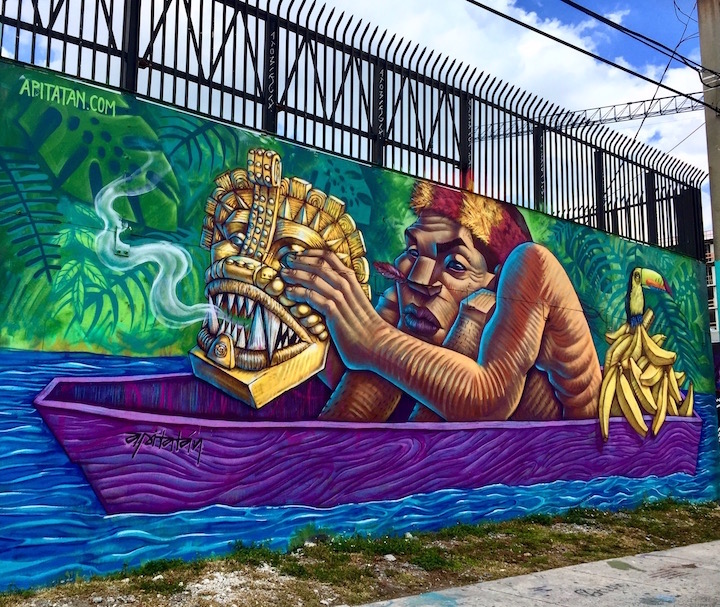
Ukranian artist Aleksey Kislow
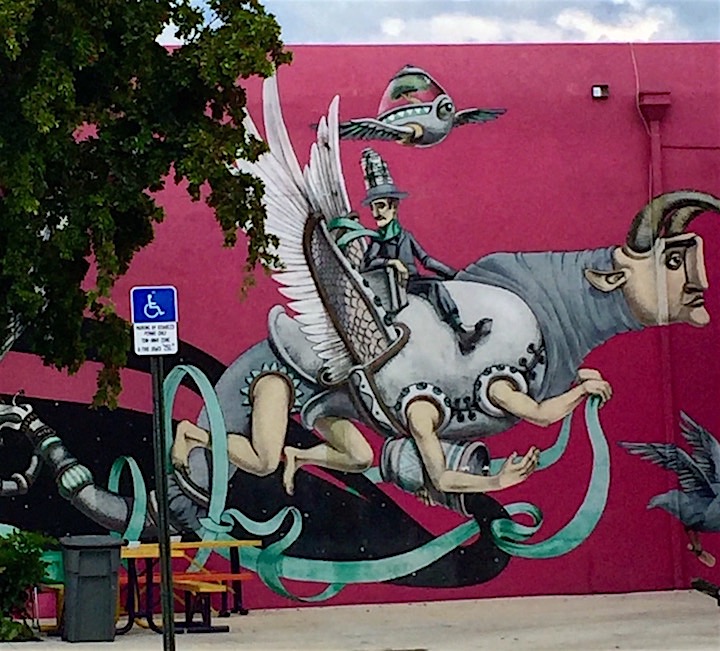
Photos by Lois Stavsky
Note: Hailed in a range of media from WideWalls to the Huffington Post to the New York Times, our Street Art NYC App is now available for Android devices here.




























